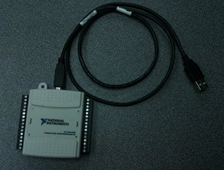Testing and Performance Analysis of TentBallasts
The goal of this project was to develop a systematic guidelines for attaching different ballasts to tents when they can not be staked to the ground. The specific focus of the project was on the number and type of ballasts that may be used for a particular type of ground surface. In order to accomplish this, the coefficients of friction between the different types of ballast and ground surfaces was determined experimentally. The ballast surfaces under investigation include steel barrels filled with water, steel barrels filled with concrete, plastic barrels filled with water, and a concrete K-rail. The ground surfaces under investigation include: asphalt (dry and wet), smooth concrete (dry and wet), rough concrete (dry and wet), grass (dry and wet), dirt, and gravel. The coefficient of frictionvalues obtained were used as a factor to aid in selecting the type and the number of ballast for a tent on a particular type of ground surface.
Frame Design
The primary concern of this project was to determine the coefficients of friction between the different types of ballasts and the different ground surfaces. These coefficients of friction can be experimentally determined by conducting pure drag tests. The testing frame was designed in order to conduct pure drag tests but can be modified as needed to incorporate other testing configurations. The frame’s overall dimensions were: 8.5’ wide, 8’ long,and 4’ tall with a total approximate weight of 900 lbs. The adjustments provided on the frame allowed the winch to be located at different heights as needed to conduct drag tests. The frame had removable casters to allowed for easy transportation between different testing locations. The CAD modeling of the frame was developed using Solidworks and is shown below.

Frame CAD Modeling
Winch
The winch chosen for testing was the 12 volt 4000lb capacity StrongArm electric winch that utilizes AC power. The winch set up included dynamic remote control used to immediately start and stop the winch from a distance of 10 feet.

Winch
Load Cell
The load cell chosen for testing was an Omega LC712-10k with a 10,000 lb capacity. This load cell was an inline load cell ideal for tension type force measurements. The reason for acquiring a cell with a large load capacity was that testing required “ganging” ballasts together which could result in combined weights approaching 5,000 lbs. This factor of safety ensured that the valuable component was never pushed to the maximum load. The load cell was attached to the winch using two rod end clevises. The use of clevises ensured strong and safe connection. For the experimental set up, one end of the load cell was attached to the winch cable while the other end was attached to a length of cable leading to the ballast.
Load Cell
Data Acquisition System
The data acquisition system was purchased based on the system specifications. Due to the low voltage output of the load cell (Maximum output voltage of 2 milli-volts per input volt), an amplifier was also used to obtain the required resolution through the USB DAQ module. This provides a stable voltage signal to the load cell and amplify its output signal to 10 volts at maximum load. The Labview software was coupled with the data acquisition module to record the data. Additionally, a video camera was coupled with the DAQ system to monitor the ballast movement on various surfaces.

The data Acquisition System
Experimental Setup
In order to estimate the number of replications required, Design of Experiment (DOE) was performed using Minitab. Twenty replications were performed for each ballast and surface combinations. Based on the data collected for the tests, ANOVA was conducted. For most of the tests combinations the results of the ANOVA showed that surface type and ballast type had significant affect on the friction coefficient. For some combinations along with the surface type, surface condition (dry and wet) had affect on the friction coefficient. Experimental set up for few ballast-surface combinations are shown below. Due to confidentiality of the data, the results and findings are not presented in detail.

Test Setup - Smooth Concrete

Experimental Set Up - Indoor
Video Recording - Ballast Movement
